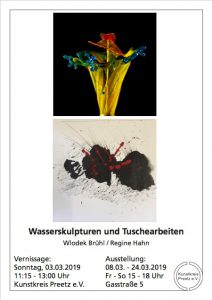
Vernissage of water sculpture photography by Wlodek Brühl, with explanations of the physics behind the pictures by yours truly!
I am a huuuge fan of Wlodek Brühl’s liquid art: Pictures of water sculptures that are created with focus on the tiniest of details, that only persist for milliseconds, but…
